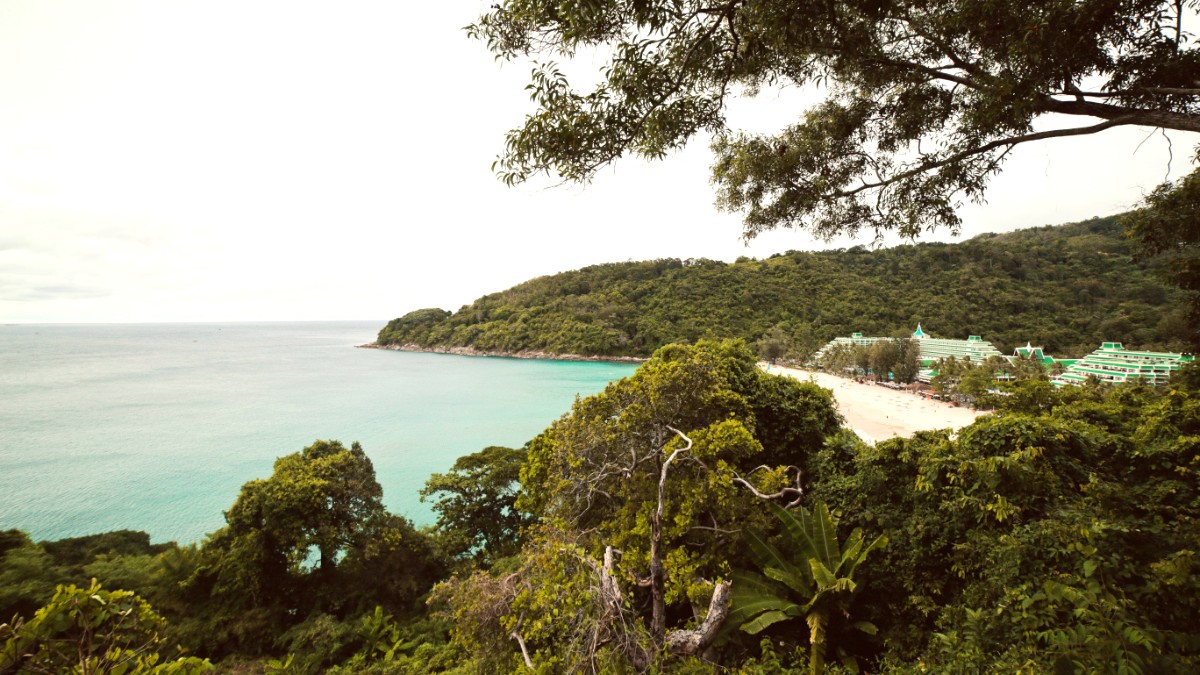
Andaman Coast, Thailand
Ko Lanta’s cuisine is mainly Southern Thai, characterized by bold flavors and aromatic spices. The island's Muslim population shapes halal food availability.
Historical trade with Malaysia and Indonesia also flavored the local palate, incorporating Indian spices and Malay elements.
Available at accommodations or local cafes from early morning.
Often a lighter meal, enjoyed at street stalls or casual local restaurants.
The main meal, often at beachfront spots for sunset. Restaurants stay open until late evening.
A rich, mild, slightly sweet curry with creamy texture, containing chicken/beef, potatoes, peanuts, coconut milk.
Widely available at Thai restaurants.
Iconic spicy and sour soup with lemongrass, galangal, kaffir lime leaves, and fresh prawns.
A flavor explosion, available almost everywhere.
Famous stir-fried rice noodle dish with eggs, tofu/shrimp, bean sprouts, crushed peanuts.
Ubiquitous across Thailand, a good choice for those wary of spice.
Strong black tea with spices, sweetened condensed milk, served over ice.
Popular brands: Chang, Leo, Singha. Local spirits: Sangsom, Mekhong.
Found within luxury resorts, with sophisticated menus and refined atmospheres.
Abundant along major beaches and in Saladan. Balanced menus with Thai and Western cuisines.
Fantastic for budget travelers and a genuine culinary experience.
A daily evening market in Saladan with many food stalls. A lively spot to sample street food.
Offers noodles, curries, grilled meats, and desserts.
A glimpse into local daily life and culinary sourcing.
Pizza, pasta found in tourist areas.
Several Indian restaurants on the island.
Various European dishes available.
A few Middle Eastern restaurants.
Strictly gluten-free options pose a challenge. Soy sauce, oyster sauce, and some curry pastes often contain wheat.
Clear communication with staff is essential. Tourist-focused restaurants may be more aware.
Communicate severe allergies clearly. Carry a translation card with your specific allergies written in Thai.
This avoids misunderstandings, especially for peanuts, shellfish, or dairy.
Opt for simpler dishes with fewer sauces. Clear communication with staff is paramount.
Carry a pre-written translation card with your allergies or dietary restrictions in Thai. This helps prevent misunderstandings.
Reputable schools like Time for Lime and Lanta Thai Cookery School offer classes.
Some small organic farms or fruit plantations might offer informal visits.
Ko Lanta lacks major dedicated food festivals, but local celebrations might feature special dishes.
Sweet sticky rice with fresh mango and coconut milk. Seasonal (March-May).
A delightful tropical dessert.
Small, round coconut-rice pancakes, crispy outside, gooey inside. A sweet street snack.
Often sold by street vendors for quick enjoyment.
Restaurants here cater to tourists, offering classic Thai dishes, Western comfort food, and fresh seafood BBQ.
Known for authentic, traditional Thai and seafood. Many establishments are built over water, focusing on Southern Thai specialties.
Simple, open-air spots on the main road and in villages often serve authentic Thai food at lower prices.
Exploring beyond main tourist areas can lead to culinary discoveries.